
Natalia Sanchez is a senior majoring in Criminal Justice and completing a certificate in geographic information systems at Florida International University. Born and raised in the 305 by Salvadorian parents. She enjoys going to local concerts for Miami native bands such as Mustard Service. With a passion for community service, Natalia is also part of the Bubble City Community Project. She works along with other FIU students with the purpose of giving back and establishing safe shelters for the homeless community in Miami-Dade.
Photograph taken by Michael Maulini/ CC 4.0
Downtown as Text
Growing up in Miami, the image of the city that is often portrayed is not exactly accurate. However, the artwork and various historical sites visited cleared up my misconceptions. I was able to soak in the rich history of those who owned this land prior to us.

Visiting the mouth of the Miami River and learning the history behind it really shocked me. I was intrigued to learn that this was one of the most important sites for the Tequesta. They had access to fertile land and access to both fresh and saltwater. I had never heard of the Tequesta until this day. I often had the misconception that the Seminoles and Miccosukee were the tribes settled around the Miami River. This then made me analyze how ignorant our Miami population can be. How many other people are living around Miami just how I was? With no knowledge or desire to investigate our cities background. A contribution to this issue is the fact that our city officials are always trying to erase our rich history. Unfortunately, officials of our city, specifically Brickell, have built skyscrapers and supermarkets over the tombs of the Tequesta. My interpretation of this is that these officials do not respect the history of the native tribes and colored people that built the land that they are now trying to profit off. Whether history taints the city in a spectacular or horrible light, we have the right to learn about our ancestors and their contributions to Miami.

The picture above shows a sign acknowledging the presence and history of the Tequesta tribe in Miami. This sign is located in Gesu church. I found this ironic due to the fact that a catholic church is acknowledging the presence of a group of people that they oppressed. My interpretation of this action is that the catholic church is starting to accept their shameful past. The catholic church is acknowledging that the Tequesta tribe had their own way of life before the religion took over. Although I think they are late to this realization, especially since the tribe does not exist anymore, I still respect the fact that they are confronting their shameful past. I respect how they are trying to learn from it and educate the public on their mistakes.

The story of the Tequesta tribe is just one of many stories that make up Miami. It is also just one of many stories that are easily forgotten. We must continue to educate ourselves upon those who once took great care of our land. We must continue to bring awareness to the issues that prevent us from further educating others on the rich history of Miami.
Overtown as Text
After visiting Overtown, I gained a new perspective on the history and culture of the city. I was also able to witness how this community works together to get through the many challenges they face.
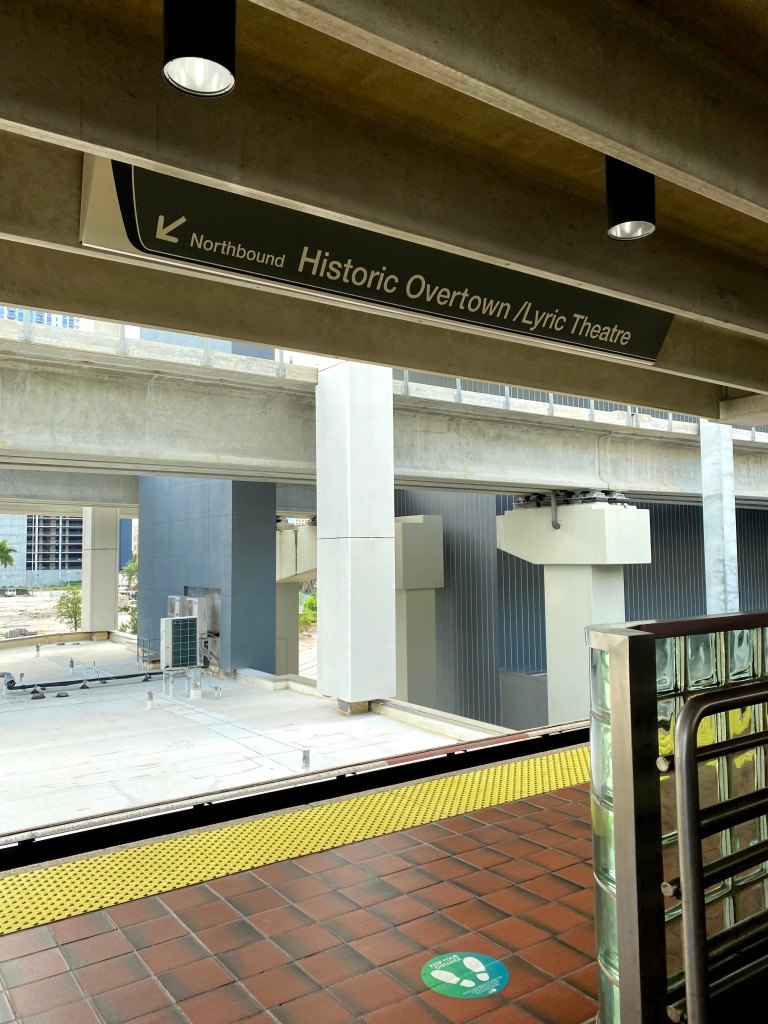
One main theme I noticed when visiting Overtown is the rapid gentrification and displacement of the community. Overtown was originally a place where black miamians went after being displaced from other nearby towns such as Downtown and Brickell. Now we notice this trend once again with the rapid construction of high-end luxury buildings. This is not only causing rent to be unaffordable for the local community, but these buildings are displacing members and making them move to nearby neighborhoods. Individuals that lived in the area for generations are now losing their houses to developers. These luxury buildings are also overshadowing the rich history of Overtown such as local restaurants, churches, and cultural sites.
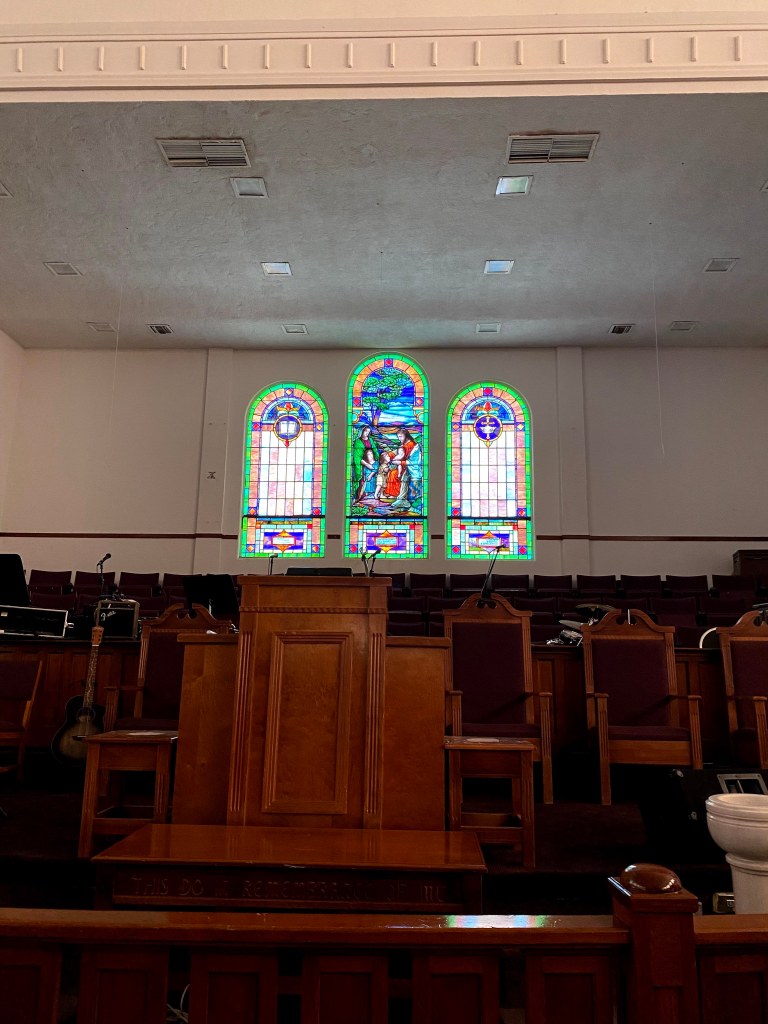
Greater Bethel AME Church was my favorite destination of the day. The architecture of the church itself was spectacular. It was interesting to learn about the Mediterranean revival style of architecture and actually seeing such a unique structure in person. Hearing the history of the church was very eye-opening for me. I was able to learn more about a different religion from my own. The stories we were told really highlighted how important the church is in the community of Overtown. The church always brought together the community. From organizing protests during the 50s to the coronavirus pandemic, the Greater Bethel Church was always there for its followers and those of the community. The members of Greater Bethel Church never hesitate to speak up for what they believe in and take care of those in need. One important piece of history of this church is that Dr.Martin Luther King Jr gave his speech of 1958. His words touched many people on that day and still inspire others now.
Vizcaya as Text
Vizcaya is one of the most popular attractions in Miami. Living my whole life in Miami, this trip was my first time visiting this historic landmark. As soon as I arrived at Vizcaya, I quickly noticed why it is such a beloved destination.

Seeing the house at first glance was breathtaking. The beautiful faded coral pink walls of the house really emphasized the fact that this building has gone through so much history and it is still standing. Walking into the back of the house, I was greeted by a sculpture of Dionysus. Dionysus is known to be the god of wine and ecstasy. This god is a perfect representation of Miami. This statue made me think about the crazy culture of Miami. This city is known for its lavish lifestyle, partying from sunset to sunrise, and self-indulging individuals. It was also pleasing to see how detailed the sculpture is. Dionysus is seen carrying a pitcher with grapes which represents wine. Wine represents living a fancy life full of pleasures. His character seems to be rather attractive which harps on the fact that James and all of the people that visited this house were concerned with the beauty within life’s pleasures.
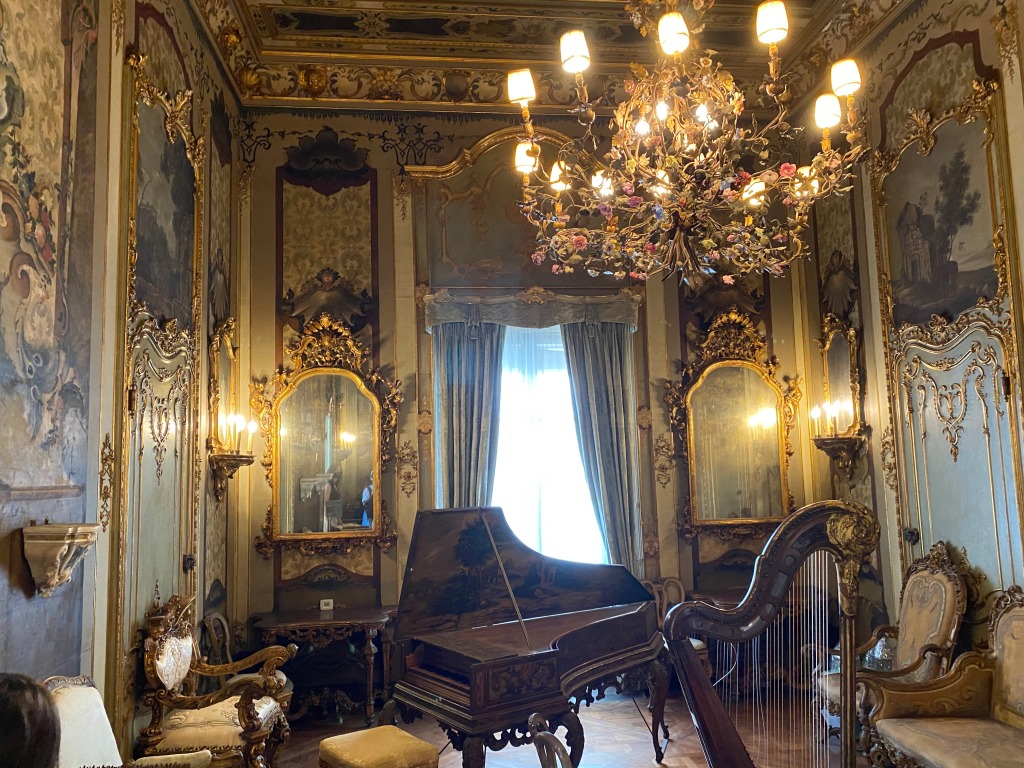
Walking inside the house, it is indisputable that James enjoyed having art being displayed. However, this brings up an issue. History shows that most of these pieces were just bought or taken without any consideration of their history. This posed another question in my head. It is quite ironic that James basically stole off other cultures for his own benefit. This is what the house was built upon. When you bring in the history of Miami, this city was built of multiple cultures. From the Tequesta that inhabited downtown to the Bahamians that inhabited coconut grove. This made me think about how these cultures are never given enough credit for everything they did and instead, the credit is given to Europeans.
This trip motivated me to not only appreciate art but be aware of the history behind it. The importance of history as well as how it contributes to Miami is a great reason why one should visit Vizcaya.
SoBe as text
Thanks to the warm temperatures and sunny skies, South Beach is known to be a must-visit destination in Miami. Although South Beach is known for its party scene and lavish restaurants, it has one unique characteristic to it. This is the art deco architectural style.
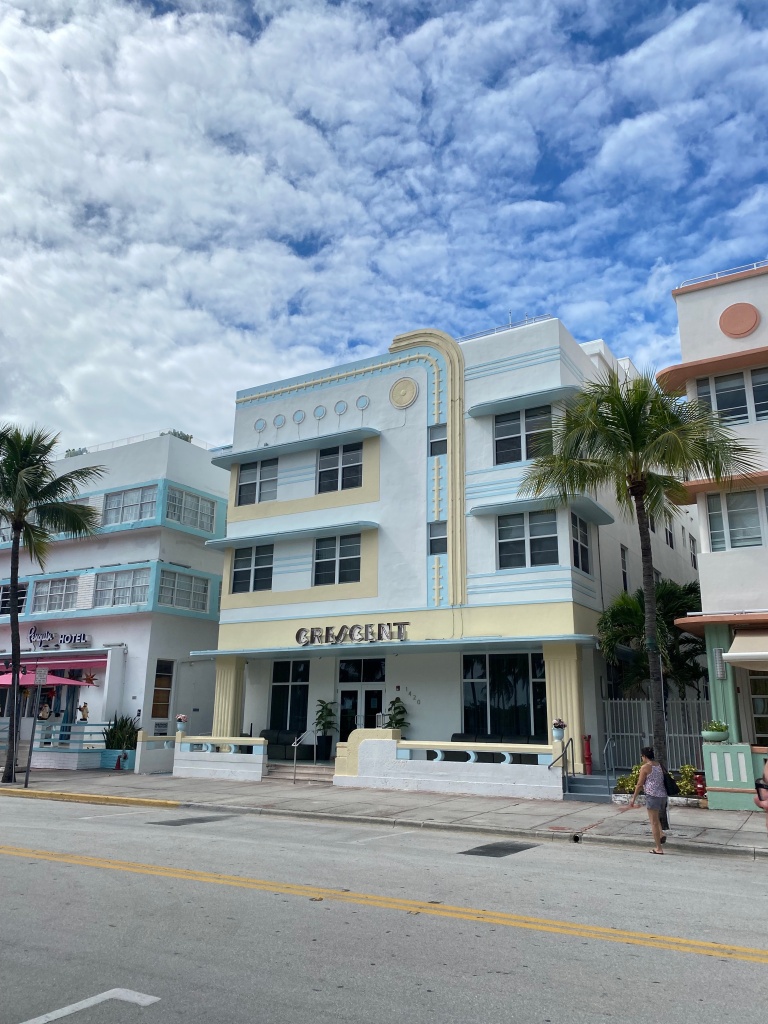
Despite living in Miami all my life, I had never seen the array of art deco buildings in person. South Beach has the largest concentration of art deco buildings in the world and most of them can be found on ocean drive. The colors of the buildings really emphasize the characteristics that make up the architectural style. Despite the beauty of these buildings, it was also great to learn about their history. These buildings were once used for affordable housing and the area was known to be a dangerous slum. Now I find it ironic how this area is now one of the most expensive areas to live in as well as shop.

Another great sight within South Beach is the Versace mansion. The architecture of the mansion itself is beautiful. However, the story behind it is truly heartbreaking. I was not alive when the Versace murder occurred, however seeing the scene of the crime in person completely solidified my thoughts about the horrific homicide. As a criminal justice major, this mansion does have a lot of significance to me. Not only is it an important piece of Miami but also an example of what not to do when handling a homicide case.
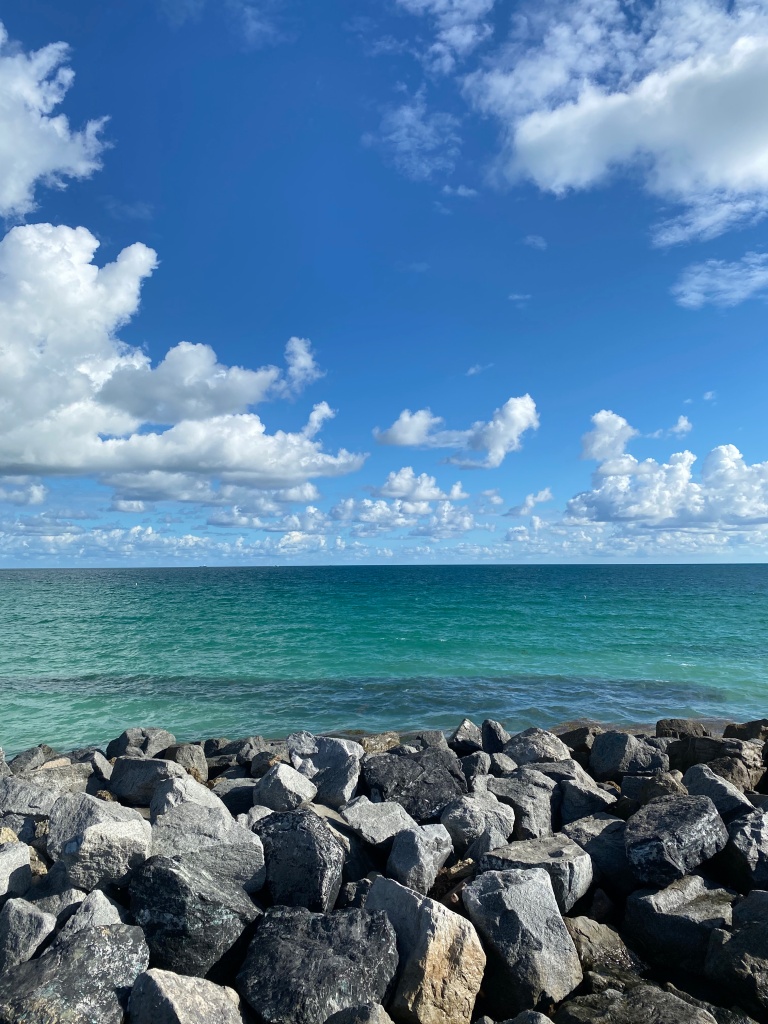
I always had the misconception that south beach did not have much history. Mostly due to the large party scene and crimes that happen. However, I was proved wrong and enjoyed learning about art deco and other historical places.
Deering as Text
If you ever need a relaxing getaway in nature, the Deering Estate is the perfect Miami destination. I was extremely excited about the trip to the Deering estate due to the fact that I had never heard about this site until I came to this course. A sunny and breezy morning greeted me once I arrived at the Deering Estate.

During the first hike of the day, I was able to experience the real Miami from before any type of urban sprawl. I had the privilege to accompany our guide, Madison, through the first of 8 different types of ecosystems within the estate. The ecosystem we focused on first was the Pine Rocklands. I was able to connect with the various types of plants and insects while hiking through this biome. The raw state of nature really brought peace to me and it reminded me of how grateful I am that this valuable piece of nature has been conserved.

Seeing the archeological sites and the Tequesta burial mound made me feel closer to the ancestors of the land that I am currently on. I have such respect for the Tequesta for all that they endured. I was relieved to know that they were left alone to rest in peace on their land. I was finally able to see that their bodies were respected enough and a 25 story condo was not built over their burial mound. I appreciate the archeological sites because they are proof of the history that Miami tries to forget. Natives built this land before it was even known as Miami and credit should be given where it’s due. It was also fascinating to see all the tools and shells that the Tequesta used back in their times. It really showed me the real Miami at its core. I was able to travel back in time.

Having the privilege to enter such an exclusive part of Miami made me ponder on the fact that preservation is important. Our city and its leaders unfortunately get persuaded by developers pretty easily. This causes the city to keep expanding at the cost of our wildlife. It was shocking to learn that Charles Deering actually wanted to preserve this space. I find it ironic since as mentioned previously, Miami is known for its rapid expansion and decreasing the everglades.
This shows a different Miami. It makes me think how much history, flora, and fauna we have lost to the boom of urbanization. However, it brought to my attention how important it is to advocate for the preservation of green spaces like these and the raw history within it.
Rubell as text
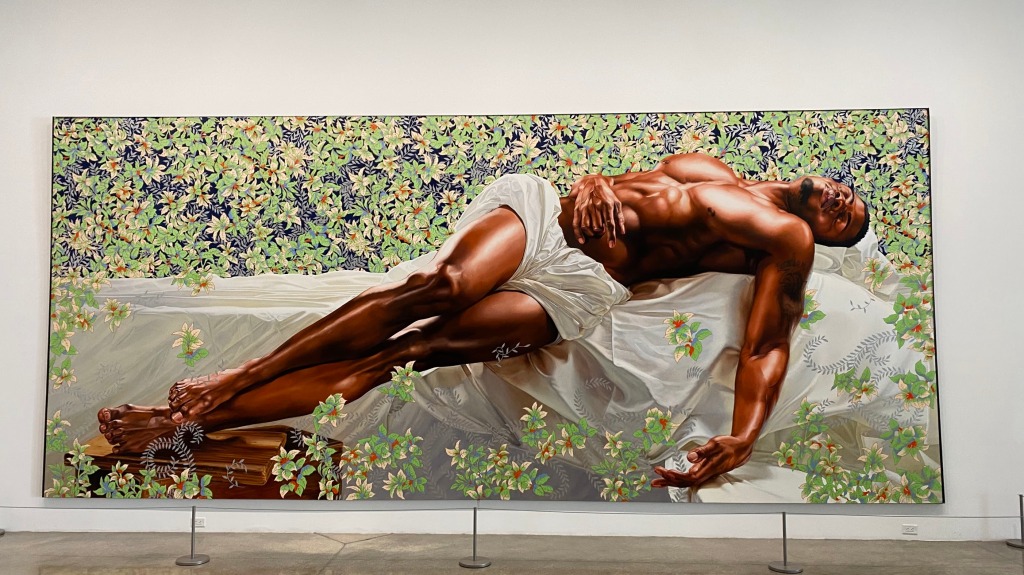
During our last classes, we have been able to see the historic sites and environmental aspects of Miami. With the trip to the Rubell museum, we were able to finally see Miami through art. Personally, I am a big fan of art museums because I am able to interpret the pieces my way. I had never heard about the Rubell Museum prior to this class so it was exciting arriving there.
We were greeted by the legend herself, Mera Rubell. It was mind-blowing being able to meet the owner of about 7,200 art pieces. It was astonishing hearing about herself, her journey of collecting art with her husband, and her recommendations within the museum.
There were many extravagant art pieces within this collection from various artists from around the world. The Rubell collection is so diverse that it proved to me how Miami the collection is. Miami is known to be a place booming with culture, and the Rubell Museum does just that. It highlights pieces and artists from different cultures and allows their messages to be cherished in an inclusive city.

My personal favorite exhibit was “Yayoi Kusama Infinity Mirrored Room- Let’s survive forever, 2017”. As seen in the images, it is a room full of mirrors. Aside from making me feel infinite, I interpreted every mirror I saw of myself as a different version of myself. I also saw it as a different route I can take in life. I enjoyed that the exhibit allowed only one person per 30 seconds because I was able to enjoy my time alone. I was able to soak up the artist’s message and come up with my own interpretations.
The Rubell museum was a spectacular attraction with lots of history and diverse stories. I definitely recommend anyone visiting Miami to check out this museum.
Untitled as text
For the final Miami in Miami class for the year 2021, I had the privilege to visit the untitled art exhibit during Miami art week. Miami art week is one of the biggest events of the year in Miami. Despite living in Miami all of my life, I never had the opportunity to attend. This visit was definitely one that I was looking forward to.
Entering the exhibit, we were greeted by hundreds of art pieces from all corners of the world. It was awesome to see my own culture being represented. My family is from El Salvador and it is very rare to find those of the same culture in Miami or just being represented in general. This astronaut suit greeted me right by the entrance. It was amazing to see how the artist used various fabrics to make the suit. I interpreted this piece as a tribute to Dr. Francisco Rubio. Rubio is the first Salvadoran-American picked by NASA to be part of the 2017 Astronaut Candidate Class. The spacesuit also highlights the countries troubling political climate and the war on drugs.
Walking around and seeing all of the other art was great, however, the feeling of being there felt off. I felt like I did not really fit in. These art fairs are like a business, paintings start at around the thousand mark. I come from a low-income background so buying an art piece that day was impossible. So it felt like I was not the target audience since I had no money.
Despite this, it was still a great experience. It was also a privilege to hear some of the individuals selling the art talk about the procedures they take in order to bring and sell their art. I was grateful that they were so open to discussing the artists and the meaning behind paintings as well because this helped me better understand the art.
Everglades as Text
For our first class of 2022, we had the privilege of visiting the largest subtropical wilderness in the world! Everglades national park is a diverse ecosystem that hosts a variety of plants, animals, and the history of natives that used to live on that land.
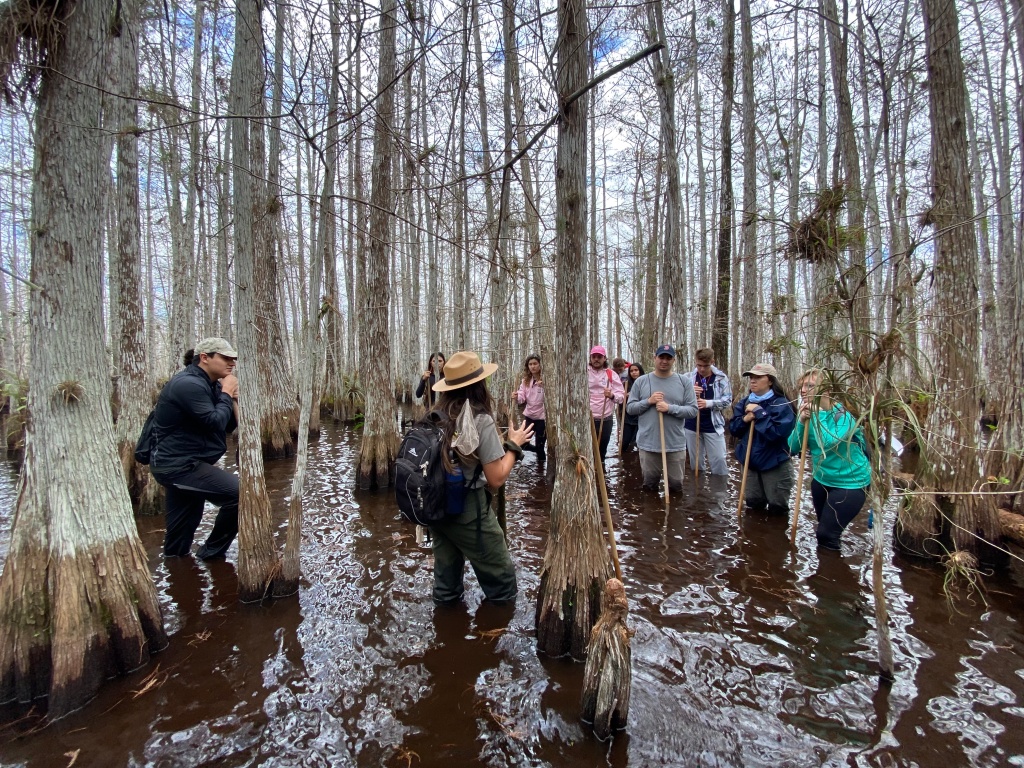
Slough slogging through the everglades was an activity that I had never done in my life despite living in Miami my whole life. My main goal for this class was to learn more about the plants and animals that inhabit the everglades.

One organism I learned about was the periphyton. At first glance, it does not look very appealing and when you touch it, it feels like soggy bread. However, periphyton is an algae that is crucial for the small consumers of the Everglades food web. It is also key for maintaining the water quality and aquatic life in the everglades. This organism was very intriguing to me because I had never seen anything like it. I also think it is amazing how such a small organism impacts one of the largest ecosystems in the world.

One of my favorite moments in the class was seeing this brown water snake. This nonvenomous snake is native to Florida and feeds off freshwater fishes. The snake we encountered was found within the cypress dome. In the image it can be seen relaxing on top of a plant. I enjoy learning about snakes so seeing one in its natural habitat was a great experience. Seeing this snake made me think about how important every animal and plant is in the everglades system. I am grateful that we were able to see a water snake since they tend to be a rare find for those who go slough-slogging.
Thanks to our wonderful ranger, I was able to learn more about the plants and animals that call the Everglades their home. I had the opportunity to try a new activity for the first time which I ended up loving. I absolutely recommend anyone to slough slog through the everglades at least once in their life. You will have a fun adventure and leave the everglades with a different perspective about this ecosystem!
Coral Gables as Text
As a Miami native, I have always been fond of the city of Coral Gables. I often find myself hanging out or shopping there. This city is known to be a beautiful hub for various restaurants and businesses. During this visit with the class, I had the opportunity to learn about the real history behind this city that is often swept under the rug.

Along our tour of Coral Gables, we were able to stop by the Coral Gables city hall. Outside of the city hall, you can see a statue of George Merrick. After passing by this statue my whole life, I was finally able to learn about the identity and history of this statue. Thanks to our tour guide from the Coral Gables Museum, I learned that George Merrick was the founder of this city. He was known to be a real estate developer. He was able to bring his vision of a beautiful, booming city to life. His idea of Coral Gables consisted of having a lot of vegetation, golf courses, housing for the wealthy, and buildings consisting of Mediterranean architecture.

However, despite all of the developments he made that turned Coral Gables into the beautiful city it currently is, we need to discuss Merricks’s racist past. We often forget that the Bahamians used to live in this area. However, with the developers taking over they were used for labor. Bahamians were the only ones in South Florida that knew how to work with limestone, which made them contribute to the construction of Coral Gables. I learned that despite all of their hard work and crucial contributions to the development of Coral Gables, Merrick wanted to introduce a law that would displace the Bahamians. This was not passed.
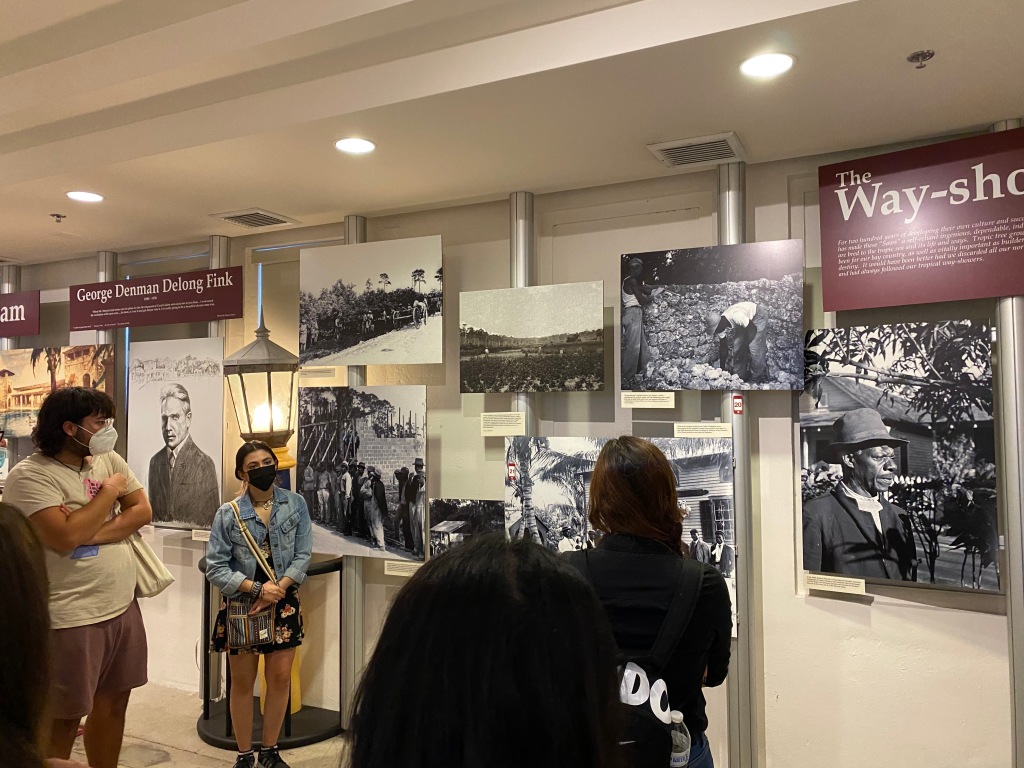
It was disappointing learning that someone so creative could be so racist. It is also disappointing to know that the city of Coral Gables often sweeps his problematic past under the rug. They seem to only highlight his good actions. I think that cities need to show the real history of their founders or development process. This would allow us to properly credit those who played a role and have better discussions about these topics.
River of grass as text
For this class, we had the privilege of returning to the Everglades. During this visit, we focused on learning more about the HM69 Nike missile base. We also hiked throughout a part of the Everglades.

We first started out the day by learning more about the history of the Nike missile base. While learning about the impact that the Cuban missile crisis had not just on South Florida but the rest of the world, I was intrigued but felt scared. I was intrigued because I was able to learn about how Miami played a role during an intense period of time. I was able to learn more details about the material of the missiles stored at the Nike missile site. Also how the soldiers would prepare and angle the missiles in case of an attack by the soviets. I did feel scared while learning all this information because life in Miami could have easily gone south. If negotiations didn’t go as planned or we had leaders with different ideas, Miami would have probably gone through the tragedy that Hiroshima and Nagasaki went through. Being in the Nike missile site and learning this history really made me realize how much power our world leaders have and how little power we as people have when it comes to situations such as war. We can easily be obliterated in a matter of seconds and have our lives and history changed forever.

After learning about the Nike missile site, we hiked throughout a part of the everglades. This was a fun adventure for me since I do not go hiking. I was able to interact with nature and reflect. I truly felt free walking throughout the everglades. No technology to distract me and I was able to spend time with my classmates. While reflecting, I realized how beautiful our river of grass is. I also felt so grateful to have access to a one-of-a-kind ecosystem.
Wynwood as Text
For this class, we had the opportunity of visiting Wynwood and learn more about the culture of this neighborhood. Wynwood is known to be the epicenter of art in Miami. Therefore, we visited an art collection and a well-known restaurant.

Our first stop was at the Margulies collection. We were able to explore this 50,000 square foot warehouse and analyze the current exhibition. We learned that these pieces are switched out seasonally and these pieces are obtained from all around the world. My favorite art piece is the one presented above in the photograph. I was not able to get the name of the piece. However it resonated with me. As shown, there is a person in fetal position in distress. Often times I find myself in that position too, seeing this piece felt rather comforting. It gave me the impression that it is normal to have a moment to be vulnerable with yourself and grieve whatever it is that you are going through.

For lunch, I and a few friends decided to eat at Zak the baker. This is a well-known and respected bakery in Wynwood. We were able to learn that this bakery hand makes all of their bread and it is kosher. For lunch, me and my friends decided to give this place a try since we had never heard of it. We ordered lemonades which I recommend trying especially on a hot day. I then ordered a BLT croissant. It was spectacular. If you ever visit wynwood, I highly encourage checking Zak the baker out.
Key Biscayne as text
For this excursion, I had the opportunity of exploring Key Biscayne. Within the neighborhood of Key Biscayne, the destination I visited was the Bill Baggs Cape Florida State Park. Unfortunately, I had to go alone since I was not able to visit with the Miami in Miami class. However, visiting the park alone gave me the freedom to explore the park on my own terms.

On my way to the park, I decided to do some research on the history of the park. I have never been to Bill Baggs before so I wanted to at least have some knowledge before arriving. Thanks to the official Bill Baggs state park website, I was able to learn some basic facts about the park. Bill Baggs is known to be a symbol of Freedom. This is because the Seminole Indians would house themselves in this specific location in order to stay in their native state of Florida and avoid being displaced. Slaves and Black Seminoles would also seek shelter from slavery here and prepare themselves for a safe journey to the British Bahamas. I really appreciated the fact that the website highlights this side of the history of the park. Oftentimes, other historic or touristic places in Miami tend to pick and chose which side of history they want to present to the public. The mentioning of these facts acknowledges the presence of our Floridian ancestors that unfortunately had to suffer abuse and endure slavery.

I arrived at Bill Baggs at around 3:52pm. I and my family had never been to this park so it was a great bonding moment driving by all the nature and appreciating it. After parking, I was able to walk over to the Cape Florida Lighthouse. Walking through the trail was such a spectacular moment. The anticipation of finally seeing the famous “farito” was exciting. Unfortunately, when I got to the lighthouse, the walking tours to climb the lighthouse were closed. However, just seeing the lighthouse from the outside was just as exciting.

Thanks to a poster that has information about the Cape Florida Lighthouse, I was able to learn that the lighthouse was originally built in 1825. The original lighthouse was only 65 feet tall with wooden stairs. From the years of 1846 to 1866, the lighthouse was repaired. I learned that It was raised to 95 feet and now contained cast-iron stairs. I enjoyed learning about the lighthouse restoration process.

I was also able to walk around the rest of the park and the beach. The beach had some of the clearest water I had ever seen. Walking around the beach helped me reflect on and appreciate the ecosystems that we have. We are so privileged to have such beautiful and historic parks in Miami that we need to remember to always advocate for their conservation.
Coconut grove as text
During this beautiful day, the class had the opportunity of visiting the historic neighborhood of the coconut grove. Personally, I had never visited this neighborhood so I was excited to learn more about its history and culture of this neighborhood.
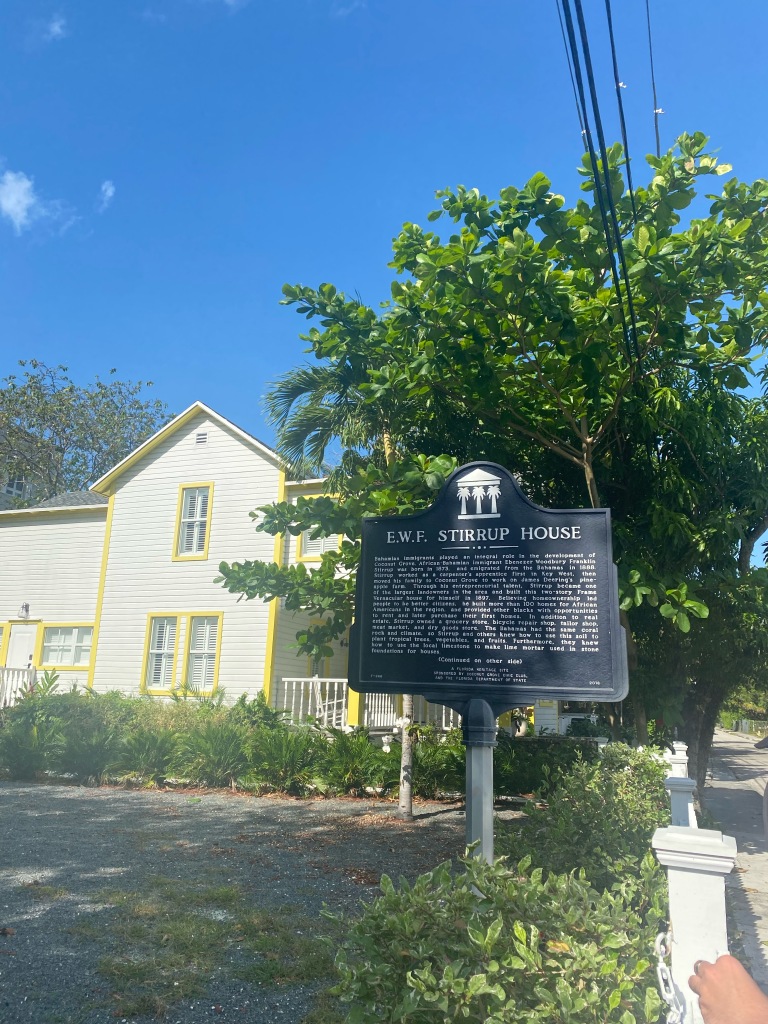
We started our journey through the neighborhood by exploring Charles Avenue. This street is iconic because it is the host of two historical landmarks. These are the E.W.F stirrup house and the Mariah Brown house. I learned that the E.W.F stirrup house was built in 1897 by Ebenezer Woodbury Franklin Stirrup. Stirrup was an immigrant from the Bahamas who worked for James Deering. This house is so important because it shows the story of a hardworking black immigrant that was able to save up and own his own property during a time that was not too fond of people of color.
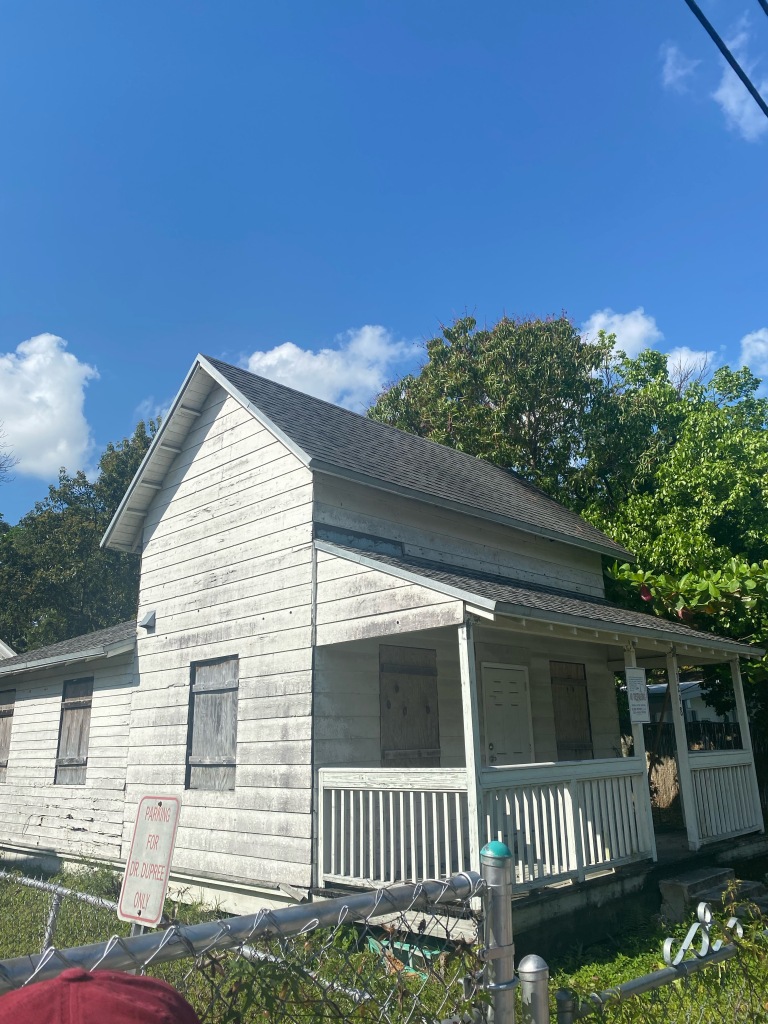
The story of the Mariah Brown house is even more inspiring to learn about. Mariah Brown was a single black mother of three children. She was also a Bahamian immigrant. She is known to be the first black homeowner. The stories of these two houses show that this neighborhood would not be here if it wasn’t for the Bahamians. It also shows that immigrants, especially black and of color, are able to succeed despite the odds. These houses are proof of history that the city of Miami cannot erase even if they wanted to.

Another destination we visited was the Charlotte Jane memorial park cemetery. Off the bat, you can see that this cemetery is not a traditional cemetery. The coffins are on top of the ground rather than underground. Personally, I was confused since I had never seen this. However, we then learned the reason as to why that is. Since this neighborhood is primarily Bahamian, they kept following their culture even after moving to the US. The Bahamian people do not bury their coffins underground due to the sea level back in the Bahamas. Therefore, even when they immigrated to the united states, they kept the tradition. This shows the impact and influence that the Bahamian people have had on this neighborhood since they settled here.